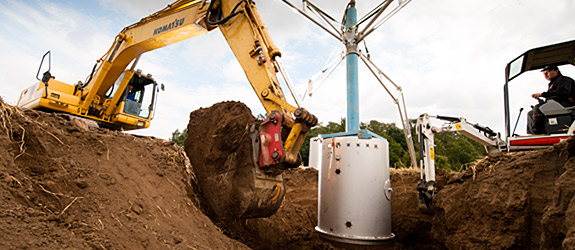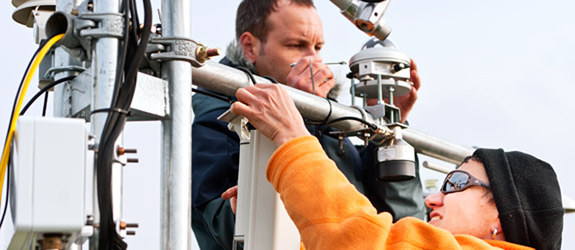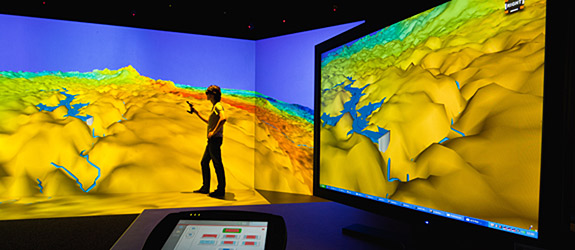From Measurements to Models
If we are to predict how the environment, ecosystems, species communities or individual species will change in the future under certain conditions, then it is firstly necessary to observe water-, matter- and energy fluxes as well as biotic and abiotic drivers in ecosystems. The challenges for environmental monitoring are in scale differences: A relatively low number of small-scale measurements is not suitable for making decisions at regional scale levels such as river catchments.
For this reason, methods and novel sensing tools are being developed , with which terrestrial environmental systems can be observed by using spatially and/or temporally highly resolved information from local-scale processes to catchment scales without disturbing `natural´ ecosystem processes. The data obtained are instrumental to improving our understanding of hydrological fluxes, states and processes, which influence the functions of terrestrial systems. This is imperative for a systematic conceptualisation and parameterisation of models, and also allows us to recognise structural weaknesses in the models.



